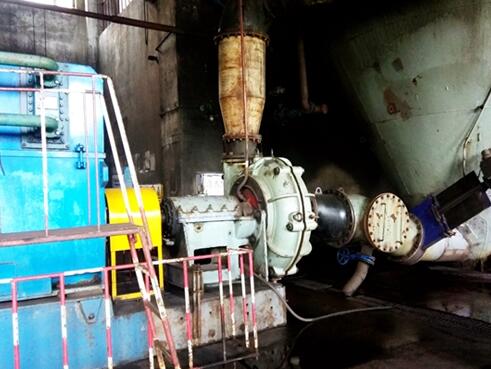Although you may not normally think about them anymore, industrial pumps of all sizes are constantly working behind the scenes to keep our modern lives running smoothly. They are used to move liquids, air and gases in a variety of industries and are essential in manufacturing, agriculture, energy and other sectors.
If you work in a sector that uses industrial pumps, here are some facts you should know.
Industrial pumps can be used to help move liquids, air or gases through a piping system. They are actually designed to work optimally at a certain point or range on their performance curve. Each pump has a unique performance curve based on standard production and testing. This is called the Best Efficiency Point (BEP).

Coal Washery Slurry Pump
While you can get a plug-and-play pump with the help of your supplier, you usually can't buy a pump directly from the factory and install it into your system. For example, if it arrives as a bare shaft unit without a motor or accessories installed as needed, you the end user will have to perform this work yourself. Some accessories may include external discharge check valves, pressure relief valves or filters. In many cases, as described by your supplier or in the pump manual, you must first.
● Add oil or grease to the bearing housing
● Align the drive (e.g., motor) with the pump and check the alignment
● Re-check the alignment after installing the piping
● Set mechanical seals, if required
A centrifugal pump responds to a set of fluid characteristics and operating speed. The system curve will determine where the pump will operate, indicating suction measures such as flow and pressure, absorbed power (HP/KW), and net positive suction head required (NPSHR).
A common misconception is that the pump draws fluid in or into itself. This is not the case, because the fluid does not have the tensile strength that the pump can use to pull these fluids into the suction. Instead, the power to move the fluid into the pump must be provided in another way - usually by gravity and/or atmospheric pressure.
Even if the pump is run backwards, fluid will still enter the suction nozzle and be discharged through the discharge nozzle, although the pump will operate much less efficiently. For some pumps, running backwards may cause the impeller to unscrew and get stuck in the housing.
If you have a problem with your industrial pump, it helps to think of it as three separate systems - the suction, the pump itself, and the downstream. If you must troubleshoot, look at the suction side first for solutions, as this is where many problems occur.
Unless otherwise noted, pump performance curves are based on their performance in pumping water at temperatures of approximately 65 to 85 degrees Fahrenheit. The specific gravity of water is 1 Kg/dm3. If you are pumping another fluid, you will likely have to correct the specific gravity and fluid viscosity yourself and consult the factory about the effects of different water or fluid temperatures.
If you work in an industry that uses industrial centrifugal pumps and are looking for a company that can provide you with the pump you need, Shijiazhuang Industrial Pump can advise you on the best pumping solution for your system. A member of our team will be happy to arrange a consultation for you.
Copyright:@2020-2021
Comments Please sign in or sign up to post.
0
0 of 500 characters used